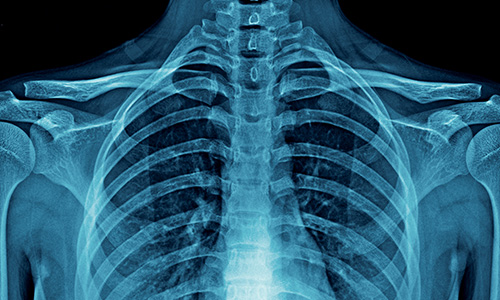

A health screening—recommended for some current or former smokers—that may reduce the risk of lung cancer mortality through early detection.
One of the primary challenges of successfully treating lung cancer is that many patients do not receive a diagnostic exam until symptoms appear—which usually doesn’t happen until the disease reaches an advanced, difficult-to-treat stage. However, a screening exam called CT lung cancer screening is changing that, giving new hope to current and former heavy smokers at high risk for developing lung cancer. Research has found that CT lung cancer screening in patients with a history of heavy smoking can reduce lung cancer mortality by 20 percent.
CT lung cancer screening uses the power of CT scanners and their image processing software to render highly-detailed images of lung tissue, enabling radiologists to detect nodules of 5mm or smaller that may be signs of lung cancer at a stage early enough for successful treatment.
Depending on the size of any nodules detected, patients may be referred for biopsy, and for cancer treatment if malignancy is confirmed. When lung cancer is diagnosed early, survival rates are much higher.
For nodules below a certain size threshold, periodic follow-up exams may be recommended to monitor the nodules for growth.
Based on guidelines issued by the National Comprehensive Cancer Network, CT lung cancer screening is an option for:
-Current smokers, or former smokers who quit less than 15 years ago, age 55 to 74* years old with 30 or more pack years of smoking history
-Current or former smokers age 50 years old or over with 20 or more pack years of smoking history and at least one additional risk factor (other than second-hand smoke exposure) for lung cancer
Pack years are calculated by multiplying the number of packs smoked per day by the number of years smoked (e.g., one pack/day for 30 years = 30 pack years, two packs/day for 10 years=20 pack years, etc.).
For patients concerned about smoking history or lung cancer risk, the first step should be a conversation with their primary care physician about the benefits of screening.
*77 years for Medicare recipients.
843. 692. 0570 • 1303 Azalea Ct. • Ste. B • Myrtle Beach, SC 29577
© 2025 Carolina Radiology • Web Design by Three Ring Focus • Privacy / Terms / Employment